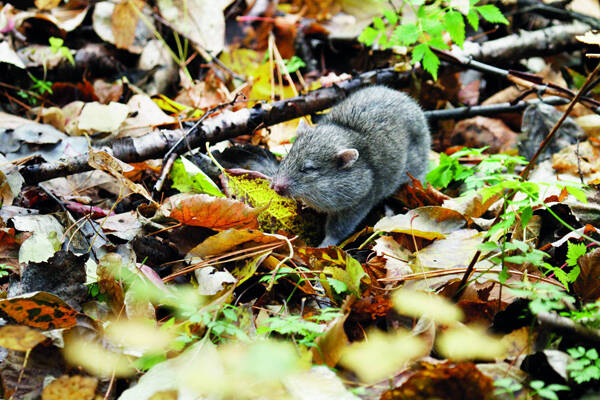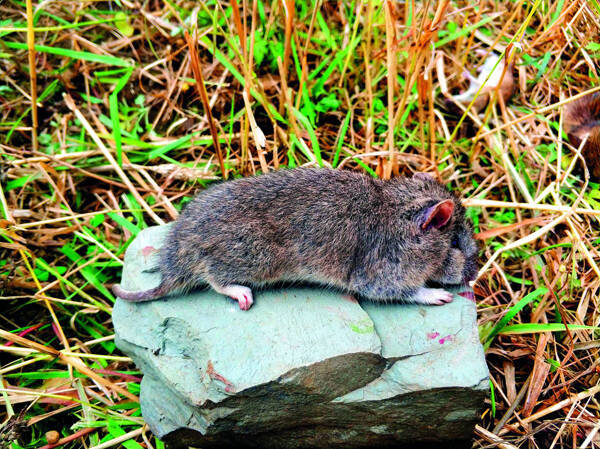Cricetulus triton
IUCN
LCBasic Information
Scientific classification
- name:Cricetulus triton
- Scientific Name:Cricetulus triton,Grey hamster
- Outline:Rodents
- Family:Rodentia Cricetidae Cricetidae
Vital signs
- length:140-220mm
- Weight:
- lifetime:
Feature
It has a large body, a short tail, a blunt head, cheek pouches, and short, round ears with narrow white edges.
Distribution and Habitat
In China, they are distributed in the area north of the Yangtze River in the eastern monsoon region. Abroad, they are distributed in eastern Russia and North Korea.
Giant hamsters prefer to live in arid areas, such as arable land with loose soil, farmland far from water and above water sources, vegetable gardens, hillsides, wasteland, etc. A few also live in houses and warehouses.
Appearance
It has cheek pouches, is large, and has a long tail. It is one of the larger hamsters with a relatively long tail. The average body length is 160 mm, and the average tail length is 85 mm. The back of the body is pale gray, and the base of the hair on the ventral side is gray with white tips. The ear edges are white. The upper and lower tails are the same color, and the tip of the tail is more or less completely white. The skull is thick and the ridges are well developed. The upper molars are composed of two vertical rows of conical tooth processes, which are worn to form two vertical rows of transverse ridges.
Details
The status of the giant hamster species is stable, and there are some differences in the genus it belongs to. Some scientists regard it as a species of the genus Cricetulus, and most scientists agree that it belongs to the genus Tscherskia. There are many subspecies differentiations, and there are 5 subspecies in China. There are also some differences in the attribution of subspecies.

The giant hamster is ferocious and aggressive, lives alone, and is a nocturnal type. Generally, they are most active from 18:00 to 24:00, and stop at 4-6:00 the next morning. In spring, they start to move when the average temperature is 10-15℃, and they move frequently when the temperature is 20-25℃. In winter, they rarely leave the cave and only move near the cave entrance. When the temperature is lower than 10℃ or higher than 30℃, their activities will be affected. In autumn, in order to store food for the winter, they use their cheek pouches to carry seeds, move frequently, and do not have the habit of hibernating. Their activities are reduced on rainy days. The range of activities is mostly 25-44m, sometimes up to 1-2 miles. Some of them enter people's houses.
The giant hamster has a miscellaneous diet and likes to eat plant seeds, grass seeds, etc. The types of food vary depending on the environment, such as soybeans, corn, wheat, oats, potatoes and sunflowers. They also eat some insects and green parts of plants, especially in spring, when they eat more green parts of plants. In autumn, they store a lot of food and classify it for storage.
The cave structure of the giant hamster is relatively complex, with holes, tunnels, warehouses and nests. Generally, there is one hole perpendicular to the ground, and there are three other oblique openings. The surface is often blocked by floating soil, called dark caves, which are built in hidden places, slightly higher than the round earth mounds on the surface. The open caves are the entrances and exits of the rats, which are built in slightly higher sunny places, with smooth entrances and no coverings. The vertical caves are about 40~60cm deep, and then turn into horizontal passages parallel to the ground. There are 1~2 nests, located on the non-frozen soil wall 1m below the ground, with weeds and grain leaves inside, which are used for giving birth and living. 2~3 granaries, short diameter 7~10cm, long diameter 35~140cm.

The fertility of giant hamsters is very strong. They usually start mating and breeding in early March and end at the end of October. They produce 3~5 litters a year, with 4~14 pups per litter, and an average of 7~9 pups. The gestation period is about 22 days, and the first litter of pups can be seen in the Northeast region at the end of April. The pups can reach sexual maturity at 2.5 months of age. The mothers have the phenomenon of blocking the hole during lactation.
The giant hamster mainly harms agriculture, stealing seeds in spring and eating seedlings after they grow out. They steal more grain during the autumn harvest. The rat is also involved in the spread of plague, leptospirosis, scrub typhus, tick-borne rickettsial diseases, toxoplasmosis, listeriosis and epidemic hemorrhagic fever, and often transmits them to humans and animals when they are sick.








